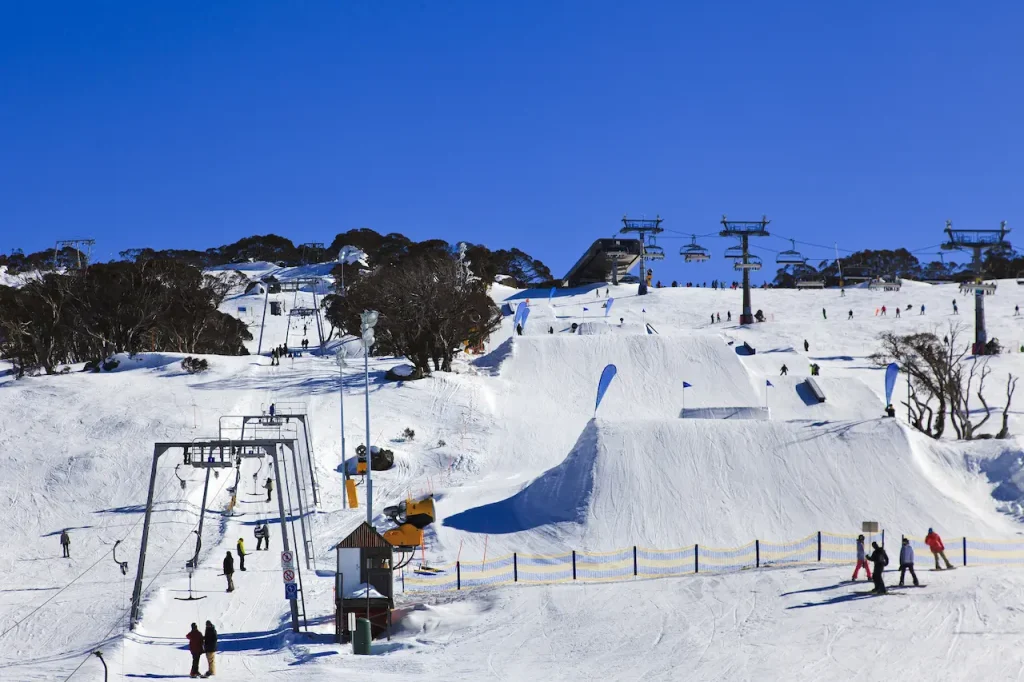Planning The Ultimate NSW Ski Trip This Ski Season?
New South Wales is one of Australia’s premier destinations for cutting powder and getting among skiers of all levels. One can find ski heaven among pristine peaks of Perisher Blue, the long and untrammelled ski runs of Thredbo, and even at the comically named Smiggin Holes – though it’s serious slopes for snowboarders and skiers alike.
So how can you plan for your NSW ski trip? What options are there? How will you finance a ski trip if you’re a beginner? We give you all the tips, guides, and how-to information so you can have a great NSW ski trip.
Table of Contents
Toggle
Choosing A Resort Or Destination
First of all, you need to choose a resort or destination for your ski trip – or even a couple if you’re into hitting different slopes across your holiday. Adventist Alpine Village is more for campers who want to experience the bush in winter; Lake Jindabyne is a ski resort town that caters to all types of skiiers. This connects you to Perisher Blue, Charlotte’s Pass, Smiggin Holes, and Blue Cow. The more adventurous option among ski and snowboard enthusiasts is Thredbo, which boasts the longest ski runs in Australia. One resort that is more accessible by coach is Mount Selwyn.
All ski resorts have their own individual accommodation, cafes, nightclubs, pubs, and other amenities. As for the right one, it can depend on your budget, needs, and who is coming along – is it a family trip, friends, or a getaway for two? This can influence costs and what you’ll be doing when you aren’t skiing!
Modifying Your Vehicle or Going on a Guided Tour
One of the ways to not think about modifying your vehicle for snowy or icy roads is to arrive at your chosen destination by coach or on a guided tour. Once you are at your ski field, you can often make use of shuttle busses or ski tubes (where available.)
You may also want to opt for a campervan to reduce accommodation costs or to use as a “base” when roadtripping the ski fields. However, this will require snow tyres and nerves of steel if you want to drive in poor light and visibility.
Buying Equipment or Renting
Australians don’t have much use for thick snow proof jackets, thermals, ski goggles, and skis/snowboards – apart from alpine regions, it doesn’t snow much on the ground! That’s why many people choose to rent instead of buy their equipment, especially if it’s an occasional holiday. If you hit the powder every year or close enough to it, buying may be the more economical choice. Do your homework and figure out if buying or renting makes the most financial sense.
Financing Your Ski Trip
With the costs of accommodation, ski equipment hire or purchase, flights, and travel insurance all adding up, you may be wondering how you’ll finance your NSW ski trip. One way is to cover it with a personal loan, which gives you the flexibility to pay for your trip and stick to a budget, as well as avoiding huge interest when paying for things by credit card. To find a loan that’s suitable for you, you should always use a comparison service so you can find a deal that suits you best.
Safety Tips
1. Check your Equipment
2. Cover All Bases
3. Learn the Rules of the Slopes
Stay in control at all times and avoid or stop other people or things. You must always give way to people in front of you.
4. Pre-Ride and then Re-Ride before you Free-Ride
5. Beware of Seasonal Conditions
6. You need to know what to do in the event of an accident
7. Know Your Limits
Stay within your fitness and skill levels. Do not let your friends convince you to go places where you will be in trouble. Only ski and ride where you feel comfortable. Remember that if you are caught riding or skiing too fast you may lose your pass. So stay in control to avoid accidents.
8. Take A Lesson
9. You are responsible for your own safety when you venture into the backcountry
Be prepared for the back country by educating yourself on conditions in the backcountry and special equipment. Ask the ski patrol about local groups that offer classes.
With all that in mind, you’ll be on your NSW ski trip in no time!